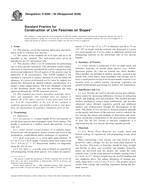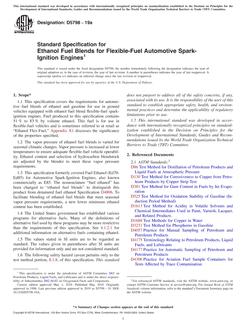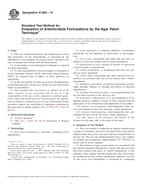1.1 Many different types of microorganisms (for example, bacteria, fungi, viruses, algae) can occupy indoor spaces. Materials that support microbial growth are potential indoor sources of biocontaminants (for example, spores and toxins) that can become airborne indoor biopollutants. This guide describes a simple, relatively cost effective approach to evaluating the ability of a variety of materials to support microbial growth using a small chamber method.
1.2 This guide is intended to assist groups in the development of specific test methods for a definite material or groups of materials.
1.3 Static chambers have certain limitations. Usually, only small samples of indoor materials can be evaluated. Care must be taken that these sample are representative of the materials being tested so that a true evaluation of the material is performed.
1.4 Static chambers provide controlled laboratory microenvironment conditions. These chambers are not intended to duplicate room conditions, and care must be taken when interpreting the results. Static chambers are not a substitute for dynamic chambers or field studies.
1.5 A variety of microorganisms, specifically bacteria and fungi, can be evaluated using these chambers. This guide is not intended to provide human health effect data. However, organisms of clinical interest, such as those described as potentially allergenic, may be studied using this approach.
1.6 This standard does not purport to address all of the safety concerns, if any, associated with its use. It is the responsibility of the user of this standard to establish appropriate safety and health practices and determine the applicability of regulatory limitations prior to use.
Product Details
- Published:
- 10/01/2003
- Number of Pages:
- 6
- File Size:
- 1 file , 52 KB


